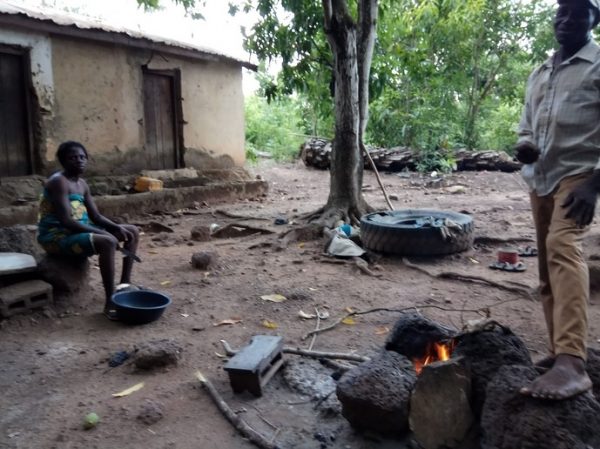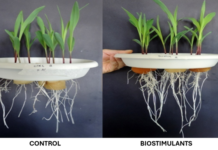Farmers struggling to make a living.
(The article is discussing Global Problems while using Africa as a Case Study).
Over sixty (60%!) percent of the world’s 7 billion people population lives, is engaged and makes a living from agriculture.
The fact that the majority of those farmers’ situation is so poor – should occupy the thoughts of world leaders, as well as the leaders and policymakers in each country (especially the less-developed one).
Under such circumstances, the key question one should ask is:
What else must we do to change and improve the situation of those farmers?
Ridicules is that farmers suffer the most precisely in the countries where there is plenty of water, land, sun and available labor – basic agri-success factors.
Hence, we can conclude that the above are not the main problems, and therefore we must seek different problem/s and search for the solution elsewhere.
Seeking a Way Out (a solution)
How do we change that situation?
It requires a perceptual change that will involve using a different economic model/s as well understanding, accepting and managing the fact that the process itself of the change will not be short or easy. It takes patience to develop and apply such a vision. We have it. We did it!
The whole Biofeed team lead by me, we are familiar with these principles, as we are driven by a long-term vision. Our vision is backed by proven high-level results over many years.
The way to ‘transfer’ a Vision into reality is through a Model. Currently applied Models simply do not reflect and do not ‘transfer’ well the vision of leaders into reality, as they would like.
Hence, there is a need for a NEW Model, that will reflect the vision of leaders and will be economically sustainable, which means, business-oriented, and highly profitable for all parties.
How do we create a ‘highly profitable for all parties‘ model?
The profit comes from providing the consumer (the buyer of agri-products), high-perceived benefits. That is high added-value products for which accordingly he is ready to pay a higher price.
Unfortunately, most farmers do not know, or do not understand, or do not have the tools to create ‘high-perceived benefits‘.
Here is our place to act. Because, once we understand the above, it becomes our duty to search for a solution and support those farmers to create ‘high-perceived benefits‘, which means increased income.
‘Support’ does not mean only, or even mainly, money.
Remember what they say –
“give fisherman money he will not be hungry,give him a boat he will feed the whole village”.
Based on past events, we know that only financial investment will not yield positive results (many have already tried this >> and failed <<).
Therefore, the financial investment is required, but it has to be located in the right initiative and combined with an appropriate holistic economic new model.
How Do We Generate Continuously ‘High-Perceived Benefits‘?
We generate high added value, and therefore income, when we give a cure for a big problem, solve related problems, bring a solution to great pain, or make (bring) significant advantage.
From the moment you generate a sustainable advantage, and there is a constant high market demand, you can charge more for the benefits that you created.
When this happens, we can demand a higher price than the ‘usual’, and have happy customers ready to pay it.
For example, the price of a cellular phone with data access is higher versus without data access. Similar is with fruits market – tasty, nice looking fruits free of chemicals and free of pests has a higher price than “regular” fruits with only part of the virtues. Most important is that in both cases the customer (the buyer) is ready to pay more for those characteristics.
Now think about a farmer who can charge 0.02$ extra for each fruit, and he is having 40,000 fruits per hectare! That is the addition of an extra 800$ per hectare. Note that many farmers live out of 1.9$ per day ($694 per year!!).
Targeting the Market
And, one more thing, to generate higher income from higher value, you have to target customers who can pay for that added value.
Therefore, we will define the global market Middle Class as the main mass-market target customer. Assuming that they have already plenty of food, and getting food is not their main problem or the big pain we are going to solve for the Middle Class, we should ask:
What is the most ‘painful’ and ‘distressing’ for the middle class?
Whether it is Europe, the US, China, India, Japan, and other advanced markets, three food issues repeat themselves, and both are related to health trends –
- The desire to consume more high-quality fruits and vegetables (healthy and beautiful).
- The (understandable) desire for fruits and vegetables to be free of chemicals.
- Environmental and social awareness of the way of production (e.g., no chemicals, and without exploiting the farmers), and transport of agricultural produce (CO2 emissions).
Bingo!
This is exactly where developing countries can produce – the highest value-added to satisfy the demand.
The Green Valley National Export Project (GVNEP) was created based on the results of the analysis of these (and other relevant) factors.
On one hand, understanding the advantages and disadvantages of agriculture and farmers’ situation in developing countries and, on the other side, understanding the needs and requirements of developed markets. That, in turn, created the push toward the GVNEP initiative.
GVNEP is a model that bridges the gap between the two ends. The result of ‘the bridging’ produces a huge business added value throughout the entire value chain, for all involved.
For more information see The Green Valley Principles; The Model Package For Successful Agricultural.









